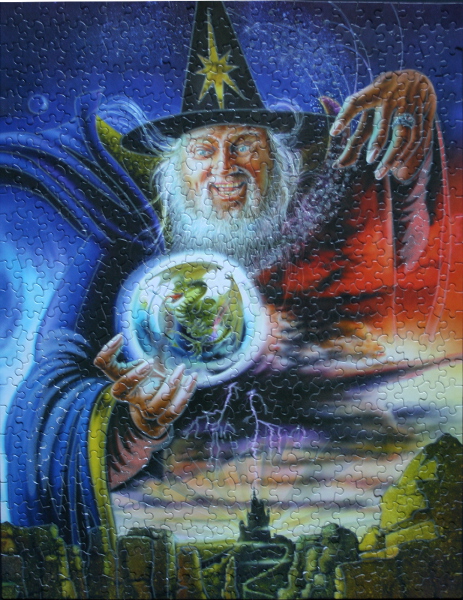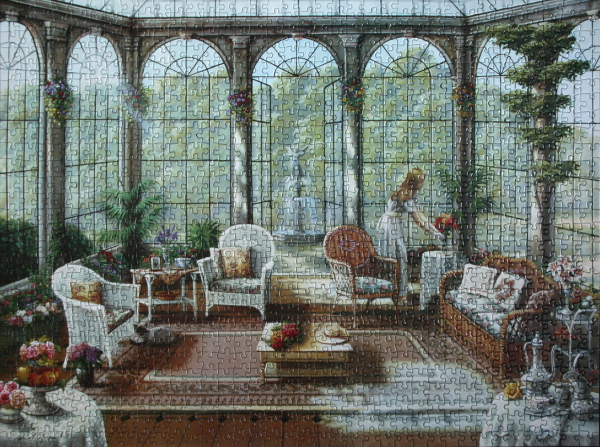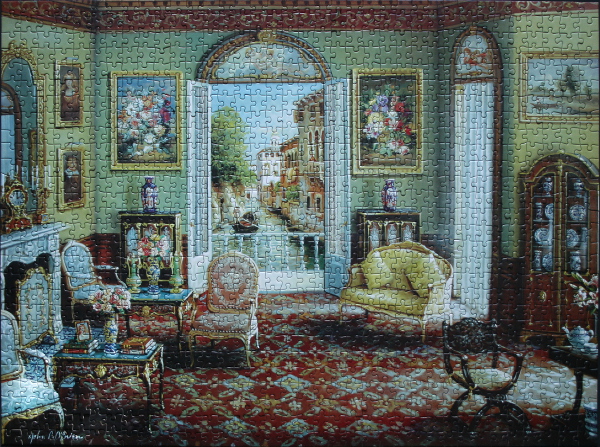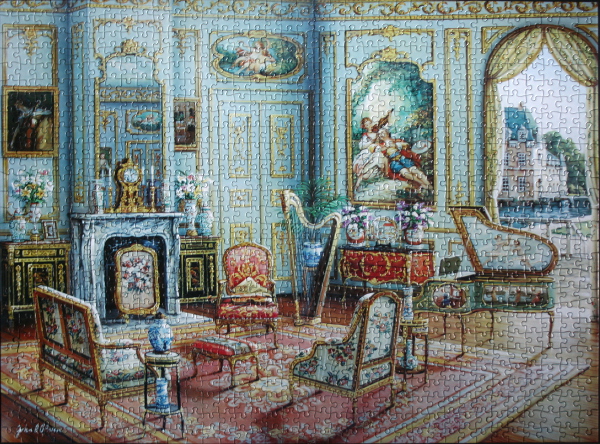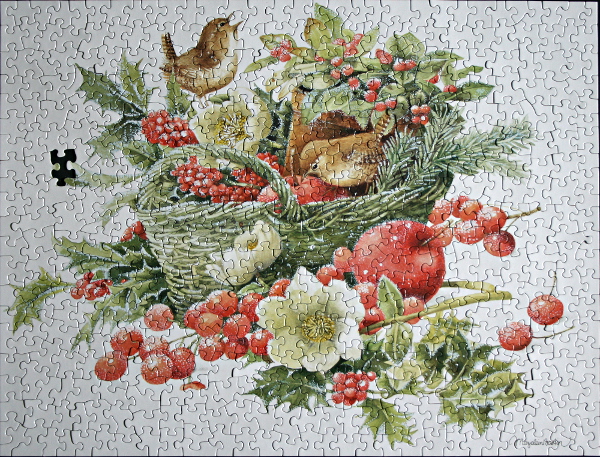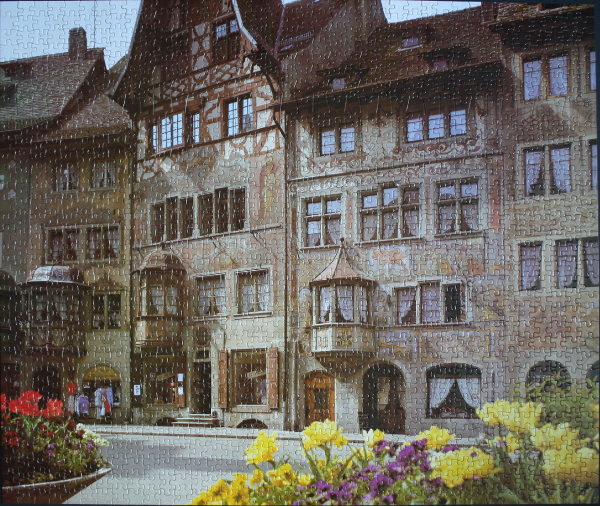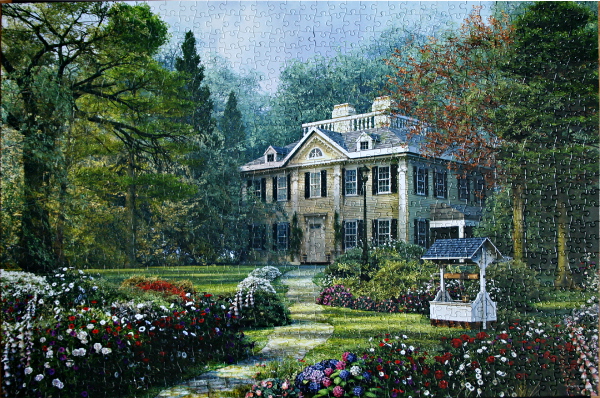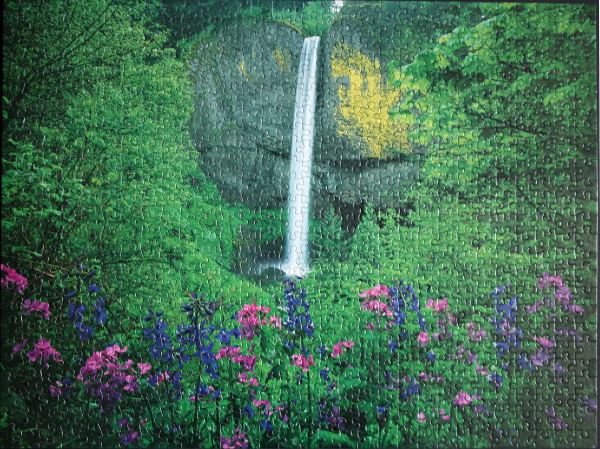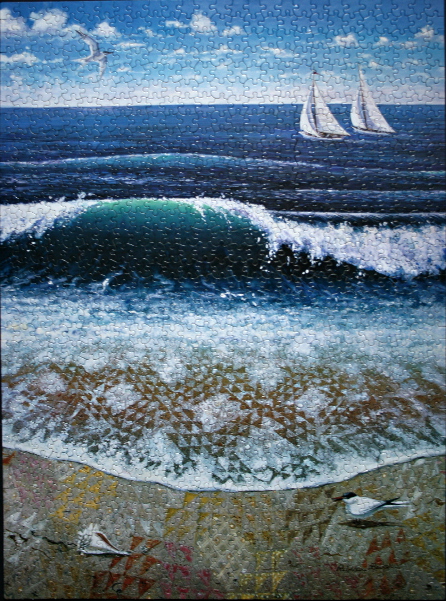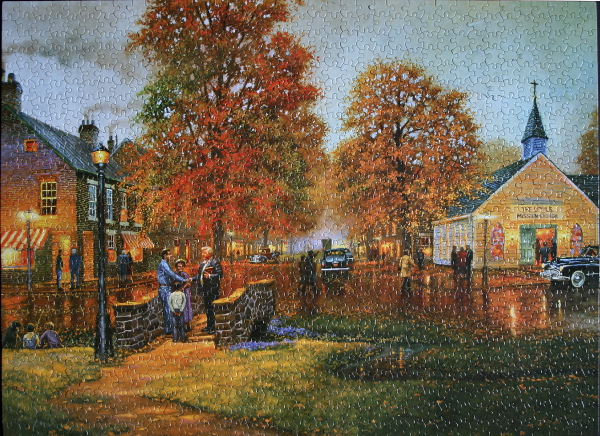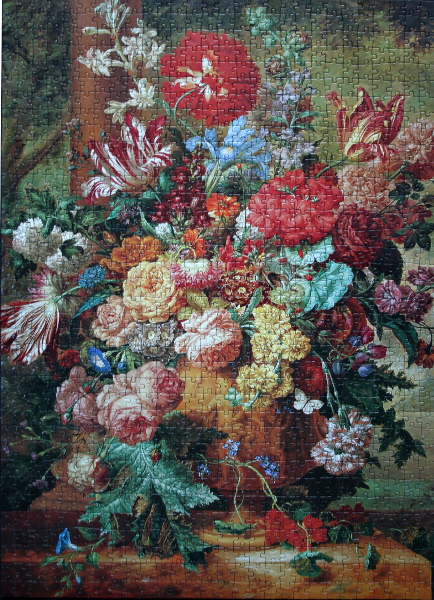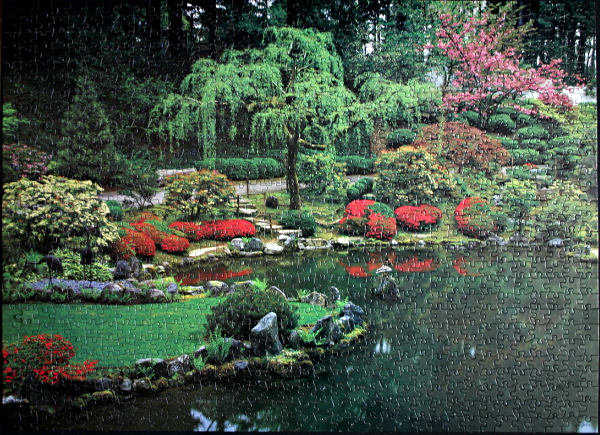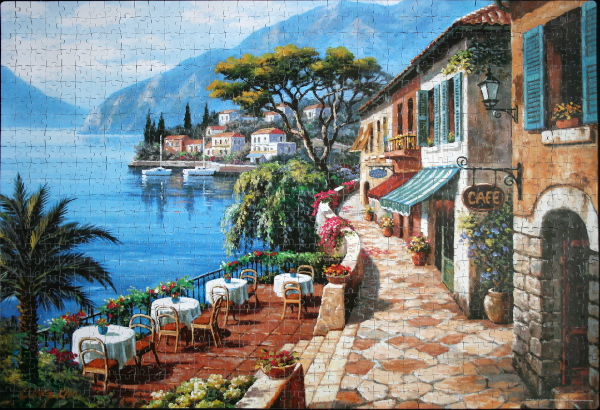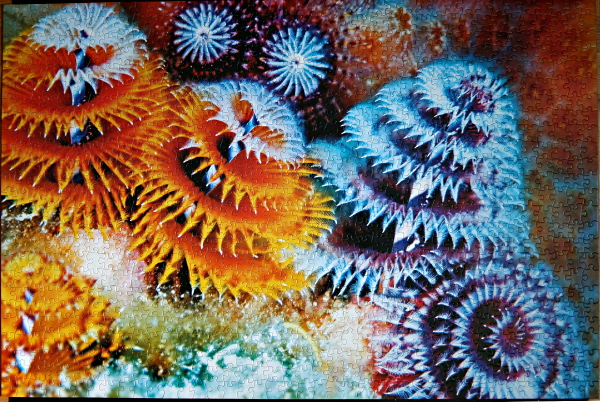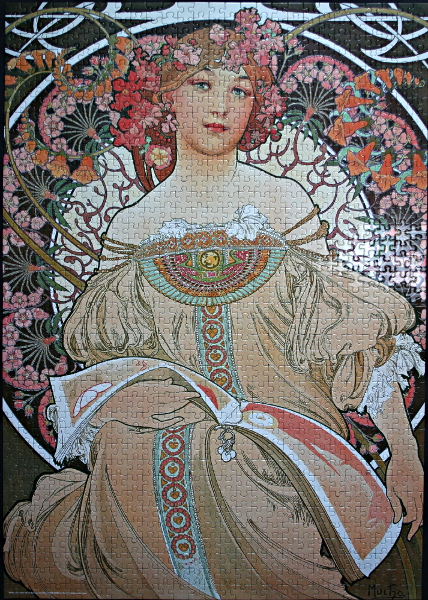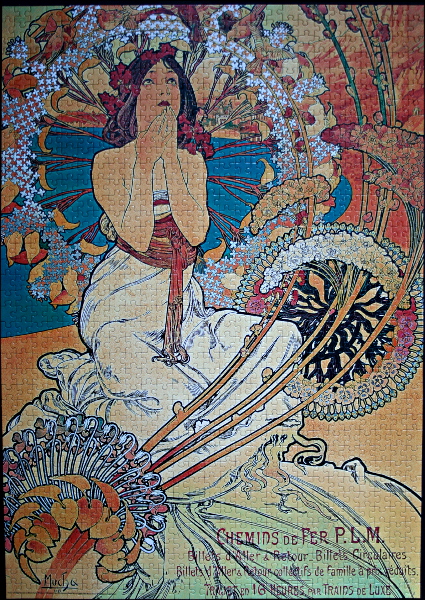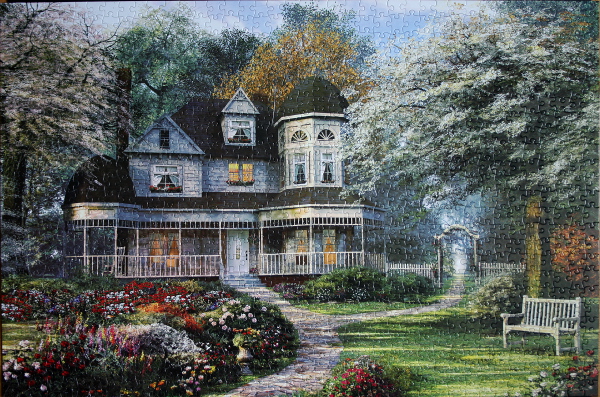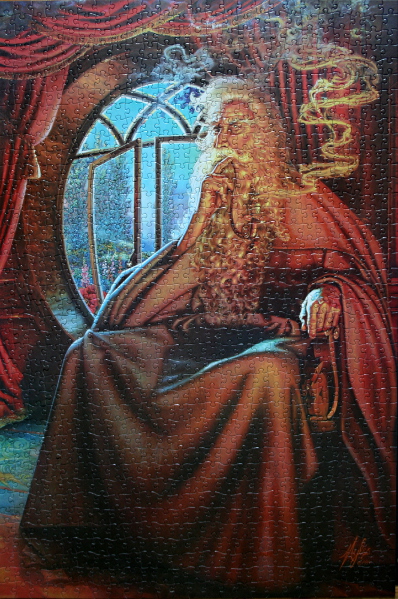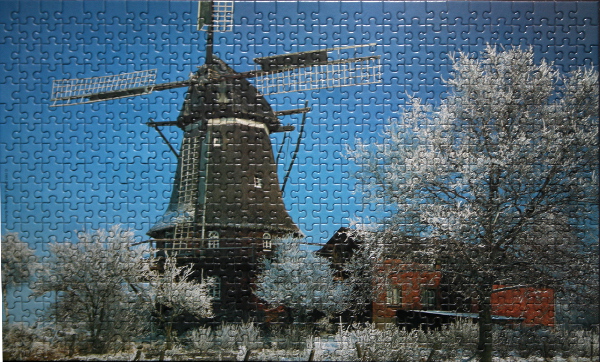Size: 550 pieces
Dimensions: 61 cm x 46 cm
Artist: Meiklejohn
Producer: Ceaco, Glow in the Dark, Series 5, 2004, #2333-32
Puzzle: Simple puzzle to do: large distinct colour regions, large pieces and clear boundaries. Wizard’s face and robe, blue light bordering it, gold embellishments on the robe, hat with the star, the dragon ball, the lightening, and the skyline are all easily assembled. The red sky region, the hands, and the landscape can follow, leaving the rest of the pieces to fall into place.
Notes: Stonehenge is a prehistoric monument in Wiltshire, England, about 3.2 km west of Amesbury and 13 km north of Salisbury. One of the most famous sites in the world, Stonehenge is the remains of a ring of standing stones set within earthworks. It is in the middle of the most dense complex of Neolithic and Bronze Age monuments in England, including several hundred burial mounds. [Wiki]






